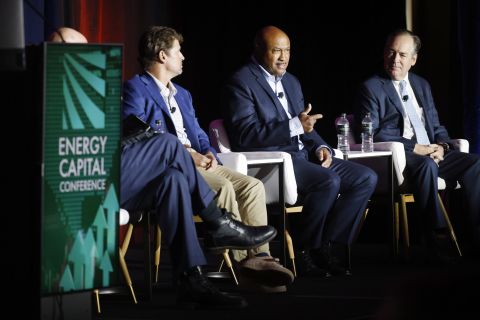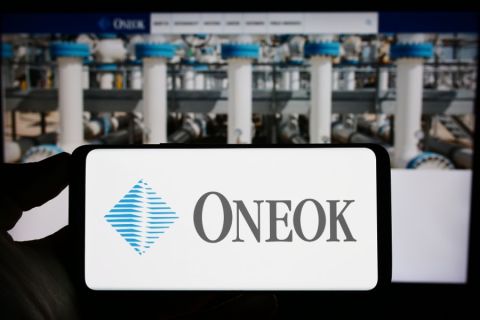
It seemed that for every logo-bedecked, stress-relieving squeeze toy given away at Hart Energy’s recent Midstream Texas conference in San Antonio, there was an accompanying deep sigh by attendees with a wish for 2016 to end already.
Understandable, given the rough year it’s been, but 2017 oil prices are unlikely to rise to the point where industry folks cease trying to squeeze their stress toys back to their polyurethane origins.
Natural gas and NGL, however, are a different story.
Ethane rejection, that bane of prolific shale production of wet gas, should decline as exports and domestic petrochemical demand increase, according to Stratas Advisors forecasts. Whether an increased demand for stress-relieving toys is behind this, Stratas did not say.
What we can say is that, not only are NGL prices rising as the fourth quarter begins and winter approaches, but they were stronger in both the most recent month and in the third quarter than they were in those same periods of 2015.
 Bolstered by ethane and C5+, the weekly average price of the hypothetical NGL barrel at the Mont Belvieu, Texas, hub hit its high for the year at $23.03—its top mark in 17 months. At Conway, Kan., the $21.77 price was at its highest level since March 2015, or 19 months.
Bolstered by ethane and C5+, the weekly average price of the hypothetical NGL barrel at the Mont Belvieu, Texas, hub hit its high for the year at $23.03—its top mark in 17 months. At Conway, Kan., the $21.77 price was at its highest level since March 2015, or 19 months.
The barrel’s price slipped in the recently ended third quarter by 4.1% at Mont Belvieu compared to second-quarter 2016, but that figure should not overshadow the upward trend signaled by September’s 13.5% hike over August. On a year-over-year basis, September 2016’s barrel rose 14.3% over the same month in 2015. The third-quarter price was 10.7% higher.
In fact, as troublesome as 2016 has appeared, with canceled propane shipments and wobbly ethane prospects, the NGL performance has not been terrible. The average price of the Mont Belvieu barrel for the first nine months of this year is $20.13, or 3.2% higher than the average for that period in 2015. At Conway, the price of $18.82 beats 2015 by 3 cents.
At Conway, the third-quarter barrel price dropped 7.7% over the previous quarter, but was still 10.6% above third-quarter 2015. Conway’s September price was 13.2% higher than August and 10.2% above September 2015.
By comparison, the Mont Belvieu barrel rose 9.6% in September 2015 over August 2015, and the Conway barrel was up 12.9%.
 Ethane at Mont Belvieu hub surpassed 23 cents per gallon (/gal) for only the third time this year for an 18.2% increase over the same week in 2015. The Conway price was its highest in three months and 15.5% above the year-ago mark.
Ethane at Mont Belvieu hub surpassed 23 cents per gallon (/gal) for only the third time this year for an 18.2% increase over the same week in 2015. The Conway price was its highest in three months and 15.5% above the year-ago mark.
Propane hit its highest weekly marks at both hubs since May, with Mont Belvieu seeing a 14.4% rise for the September average over August, and Conway’s monthly price soaring 25.2%. The weekly price at Mont Belvieu, 52.56 cents/gal, is 10.9% higher than the 47.38 cents/gal registered in the same week in 2015. Conway recorded a 12.9% gain for propane over the same period in 2015.
While propane also took a hit from the second quarter, its Mont Belvieu price was 20.6% higher than third-quarter 2015 and 22% higher at Conway, where the average languished at about 36 cents/gal in the same period last year.
Butane set a high for 2016 at Mont Belvieu, pushing through the 70 cents/gal level for the first time since the first week of March 2015. Conway’s 67.2 cents/gal was also its high for the year.
Isobutane continued its rally above 70 cents/gal for the third straight week, hitting a high not just for this year at Mont Belvieu, but last year, too. The last time isobutane was this pricey was in December 2014. Conway’s price, also a high for the year at 77.45 cents/gal, was its best mark since March 2015.
 C5+ also reached its high for the year and best mark since July 2015 at Mont Belvieu. At Conway, the numbers were not as flashy but the price still broke $1/gal for the first time in five weeks.
C5+ also reached its high for the year and best mark since July 2015 at Mont Belvieu. At Conway, the numbers were not as flashy but the price still broke $1/gal for the first time in five weeks.
Storage of natural gas in the Lower 48 rose by 80 billion cubic feet (Bcf) in the week ended Sept. 30, the U.S. Energy Information Administration reported. The increase, above the Bloomberg consensus average of 71 Bcf, results in a total of 3.68 Tcf. That’s a 2.1% increase over the 3.606 Tcf total at this time in 2015 and 5.9% above the five-year average of 3.475 Tcf.
Joseph Markman can be reached at jmarkman@hartenergy.com and @JHMarkman.
Recommended Reading
Post Oak Backs New Permian Team, But PE Faces Uphill Fundraising Battle
2024-10-11 - As private equity begins the process of recycling inventory, likely to be divested from large-scale mergers, executives acknowledged that raising funds has become increasingly difficult.
Exxon Mobil to Cut Almost 400 Jobs in Wake of Pioneer Acquisition
2024-11-14 - A regulatory filing shows more than 90% of layoffs are at Pioneer’s former headquarters in Irving, Texas with the rest being workers in Midland.
Post Oak-backed Quantent Closes Haynesville Deal in North Louisiana
2024-09-09 - Quantent Energy Partners’ initial Haynesville Shale acquisition comes as Post Oak Energy Capital closes an equity commitment for the E&P.
EQT to Cut Workforce 15% Following Close of Equitrans Acquisition
2024-10-02 - EQT Corp. closed its $5.5 billion all-stock buy of Equitrans Midstream Corp. on Sept. 22.
ONEOK Offers $7B in Notes to Fund EnLink, Medallion Midstream Deals
2024-09-11 - ONEOK intends to use the proceeds to fund its previously announced acquisition of Global Infrastructure Partners’ interest in midstream companies EnLink and Medallion.
Comments
Add new comment
This conversation is moderated according to Hart Energy community rules. Please read the rules before joining the discussion. If you’re experiencing any technical problems, please contact our customer care team.






